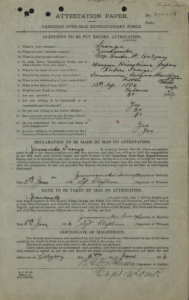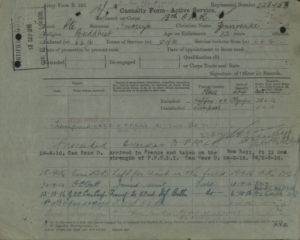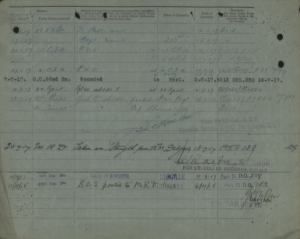The topic: The detention of undocumented refugees when they cross into Canada.
What’s new: National and location specific orientation information booklets given to detainees have been released under a recent Access to Information Request.
Why it’s important: These documents paint a picture of what life is like for refugees inside Canadian detention centres.
“You were detained under the Immigration and Refugee Protection Act,” the documents begin.
The documents show that detainees are searched and handcuffed when they are brought to the centre, and any time they leave and return afterwards.
Upon arrival, detainees are given these orientation booklets, offered in 16 different languages to accommodate people coming from as many countries as possible. There is one national booklet that every single detainee receives, and each centre can also have a location-specific booklet to outline its own additional information.
The booklets outline what a refugee can expect day-to-day at the detention centre. This includes meals, phone privileges, and visiting hours.
Wake-up calls start at 5:40 a.m. Since bedtime isn’t until 11:30 p.m., this means the refugees have had only six hours of sleep at best.
Detainees are served breakfast, lunch, dinner, and two snacks. According to Patrizia Giolti of the Canada Border Services Agency, the meals follow the Canada Food Guide and include fish and meat alternatives.
Giolti also says it provides detainees with “access to fresh air” and exercise, but did not elaborate on what that could include. Photos obtained under the Access to Information Act indicate that detainees may have access to a gym area.
Most importantly, the documents outline the detainees’ legal rights, including their right to be represented by counsel at their own expense or through legal aid. According to the booklet, detainees “will be given the necessary information about legal the legal aid services available to [them].” In photos, the phone number for legal aid is written in English and French on a sticker posted on the centre’s bulletin board.
Last year, the average length of detention was 23 days.
What the government says: Giolti says the agency strives to treat detained persons with respect and dignity.
On whether or not the detainees get adequate time to sleep, she says, “We can tell you the CBSA works to ensure that it is exercising responsibility for detentions to the highest possible standards, with the physical and mental health and well-being of detainees as well as the safety and security of Canadians as the primary considerations.”
What others say: Audrey Macklin, the Chair in Human Rights Law at the University of Toronto, wrote about the people she met in detention centres in a report released in February.
In the report, she says she met a toddler named Alpha, who was born in Canada in 2015 after his mother Glory Anawa came here when she was pregnant to make a refugee claim. She was placed in the Toronto detention centre.
“Born on Canadian soil, Alpha was a Canadian citizen,” Macklin writes. “Sadly, however, he had never seen the outside of the detention centre. Put bluntly, he was a child born and raised in captivity. It was as dehumanizing as it sounds.”
She writes that she hopes the report, published by the International Human Rights Program, would highlight the failures of the Canadian detention system.
Several Montreal-based immigration lawyers did not respond to requests for comment, but Macklin writes in the report that many lawyers don’t speak publicly about the detention centres because they fear it will affect their cases.
What’s next: With the recent influx of refugees entering into Canada, the detention system will be put to the test, and likely pushed to its limits.







